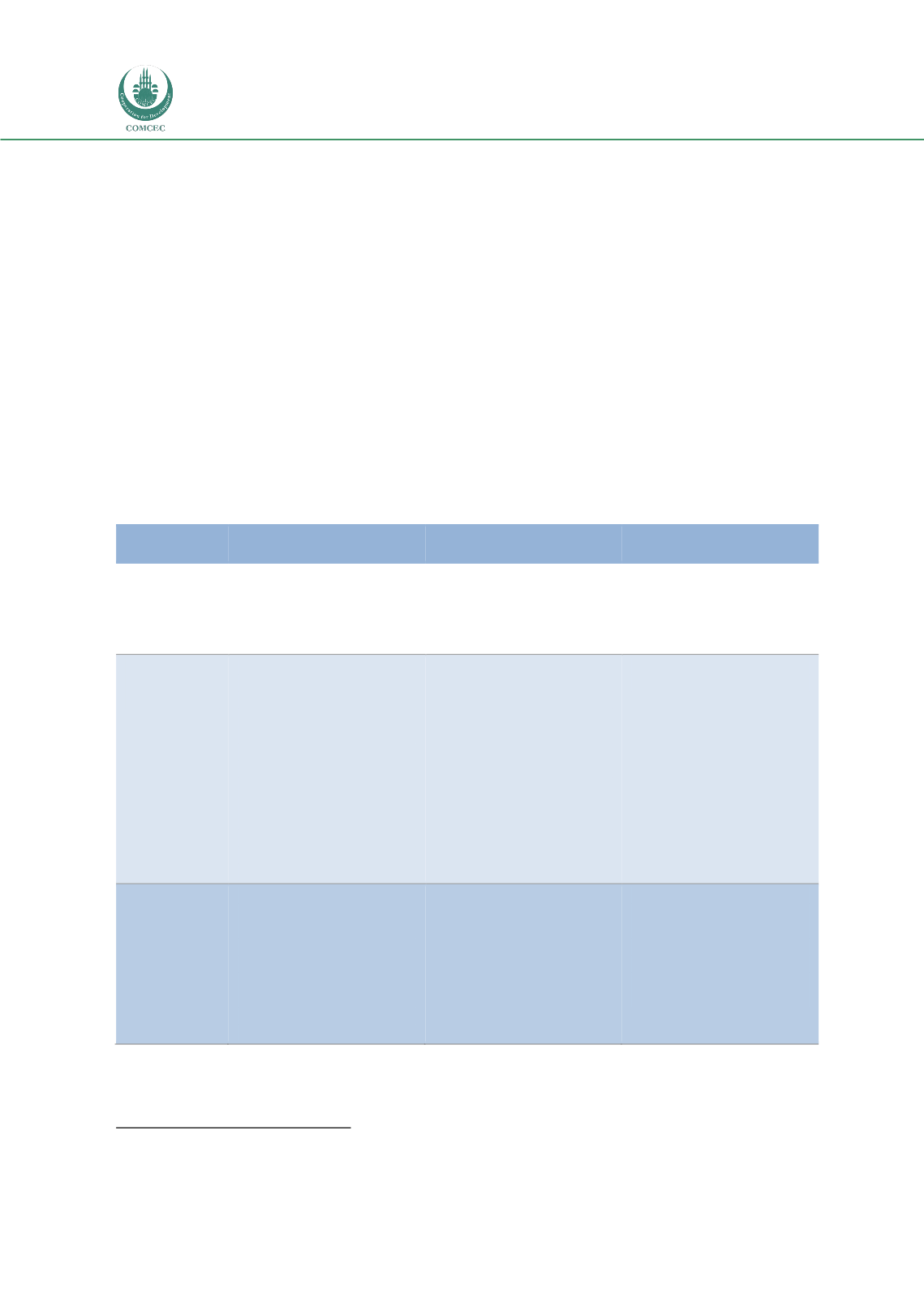

Facilitating Smallholder Farmers’ Market Access
In the OIC Member Countries
122
Poor access to agricultural finance is a major reason for smallholders’ suboptimal
production mix, adoption of low-risk/low-yield production patterns, limited use of inputs,
and inevitably smaller yields and poor quality produce. The lack of credit can also limit
farmers’ marketing options, forcing them to become price takers at the farm gate
(Table 24).
Ordinarily, banks will not invest adequately in understanding the nature of demand from
the agricultural sector and the nuances of the different value chains. This lack of
information leads banks to design financial products that are inappropriate to most rural
activities. For that reason, even when formal finance is available, the products on offer
may not match producers’ needs and tend to have heavy collateral requirements.
Wealthier farmers can obtain larger loans at lower costs from formal lenders because they
can credibly pledge assets or future cash flow—an option that is usually not available for
poorer smallholder farmers. Farmers who qualify for formal loans may still turn them
down, because they do not want to lose collateral.
196
TABLE 24: IMPACTS OF POOR ACCESS TO FINANCE ON VALUE CHAIN PARTICIPANTS
Impact on the processor
Impact on the producer
Impact on the input
provider
Lack of credit
for the
processor
•
Cannot secure sufficient
volumes.
•
Cannot hold stocks in
order to operate most
efficiently.
•
Delays in milling and
processing, resulting in
storage costs and
potential sales losses.
•
Producers cannot create
high-quality goods, so
lack incentives to utilize
inputs.
Lack of credit
for the
producer
•
Volume shortfalls,
resulting in running
factory inefficiently.
•
Lack of economies of
scale.
•
Difficulty in obtaining
standard grades.
•
High cost of capital per
production unit.
•
Limited capacity to
absorb fixed costs
associated with
processing.
•
Suboptimal production
mix.
•
Adopts low-risk, low-
yield production pattern.
•
Asymmetric price
information causes
producers to be price
takers at the farm gate.
•
Limited use of inputs,
lowering yield and
quality.
•
Reduced demand for
inputs by producers.
Lack of credit
for the input
provider
•
Volume shortfalls,
resulting in running
factory inefficiently.
•
Lack of economies of
scale.
•
Difficulty in obtaining
standard grades.
•
High cost of capital per
production unit.
•
Has to buy inputs
expensively due to the
high costs of inputs,
uncertainty regarding
sales volume, and high
risk associated with
selling on credit.
•
Provide inputs
expensively due to the
high costs of inputs.
•
Difficulty maintaining
adequate stock,
uncertainty regarding
quantity to be sold.
Source:
AfDB 2013.
196
World Bank (2007).

















